5 Disturbing Queer Horror Films To Keep You Up At Night [New Queer Extremity]
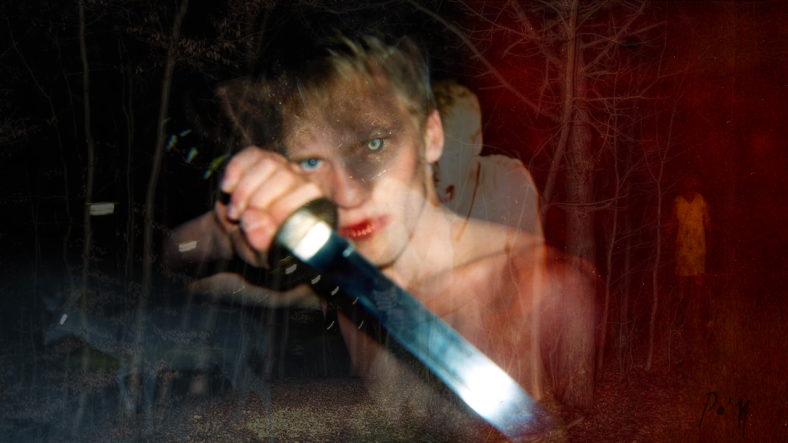
For decades, queer experiences have been displayed on screen even when they had to be masked in other contexts due to censorship or social mores. The purpose of this column has always been to shine some light on films that have queer tones in both text and subtext, and this list has a mixture of the two. Above all, I hope that this list brings some new queer horror to your attention, or helps you see films that you’re familiar with from a different perspective.
1. Der Samurai (2014, dir. Till Kleinert)
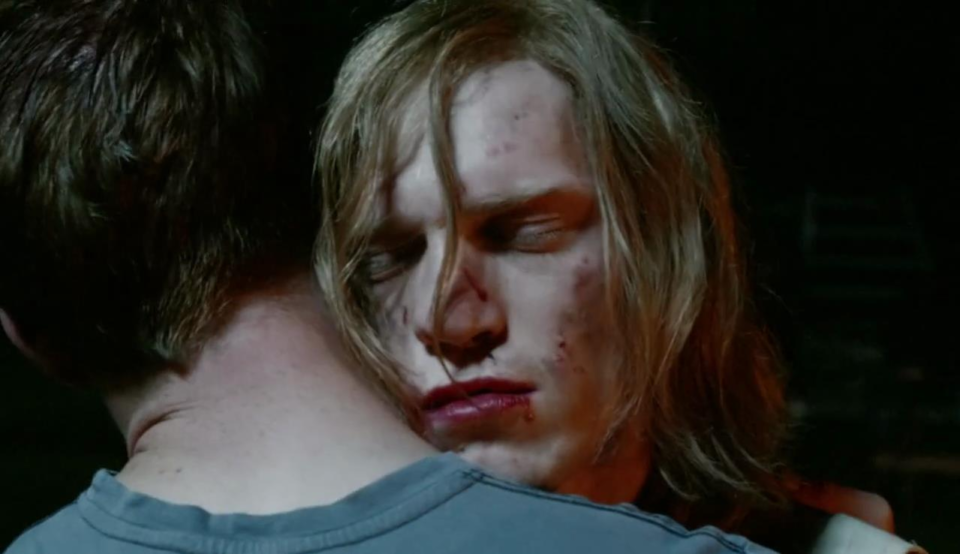
This strange little film has a very intimate feel to it, and one that requires patience and attention to hit its particular wavelength. The dreamy atmosphere and folklorish tone separate it from the other films I’ve covered in this column. If I had to describe it, it feels like a lone Ronin film that’s been fed through an arthouse folk horror film. The movie follows the arrival of the titular Ronin, who wanders the town with a katana and a dress striking down those that make this small town unwelcoming. The only thing that keeps the samurai in check or can communicate well is Jakob, a local police officer who seems to be hiding his own sexuality in this small, xenophobic town.
The film also mixes in wolf symbology, tying Jakob’s sexuality to it as well as the existence of the samurai. Their interactions and shifting relationship sit at the core of the film, which reflects the existence of a queer person in a small, homophobic town. Jakob’s hesitance and worry are pushed through the prism of the samurai’s violence against the people that mock him. It is an incredibly accurate reflection of growing up or living in a town where being openly queer would only lead to more trouble. A beautiful, violent, and thoughtful film.
2. Siege (1983, dir. Maura O’Connell & Paul Donovan)
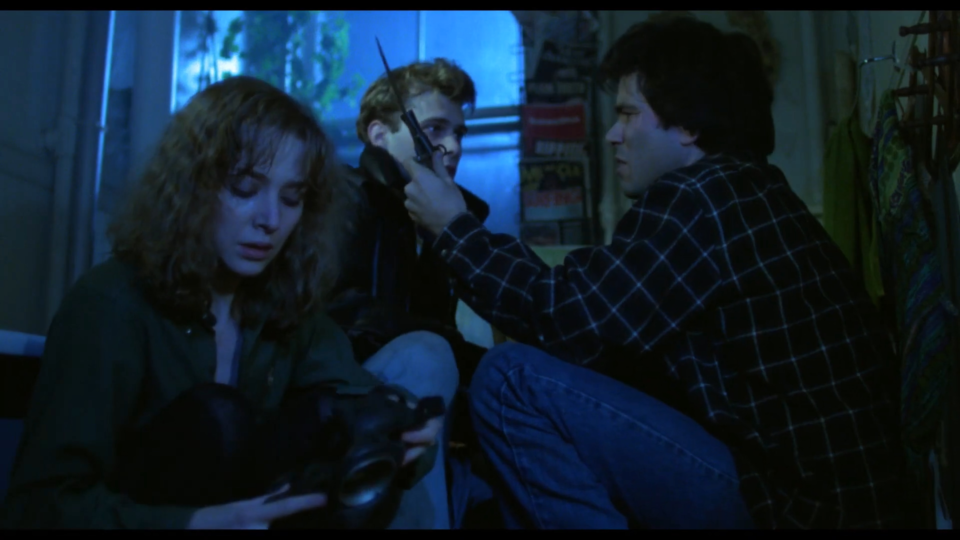
Siege is a socially focused take on the single-location defense film that genre fans are highly familiar with. It takes the claustrophobic intensity of Assault on Precinct 13 and applies the layer of a gay man escaping a white supremacist group, only to hole up with some unwitting good samaritans. The film’s atmosphere is off the charts and the tension is ratcheted up to almost unbearable degrees over the course of its runtime. Some sections are also indebted to giallo films, with the leader of the gang stalking with black gloves throughout a powerless apartment.
Whereas Der Samurai posits protection from the queer individual himself (through the metaphorical samurai), Siege instead depends on the movements of allies. This is a positive, but also the gay man who is seeking asylum proves to be ineffective and terrified without the aid of his allies. Only in the end does he find his courage in viewing his straight compatriots, which strikes me as a bit condescending. Call it dragging out the white cishet savior trope, which the previous film successfully sidesteps. Still, I think that Siege is still a worthwhile film even with its shortcomings. Negative feelings about the messaging in a film don’t necessarily rob it completely of value.
3. Jungle Holocaust (1977, dir. Ruggero Deodato)
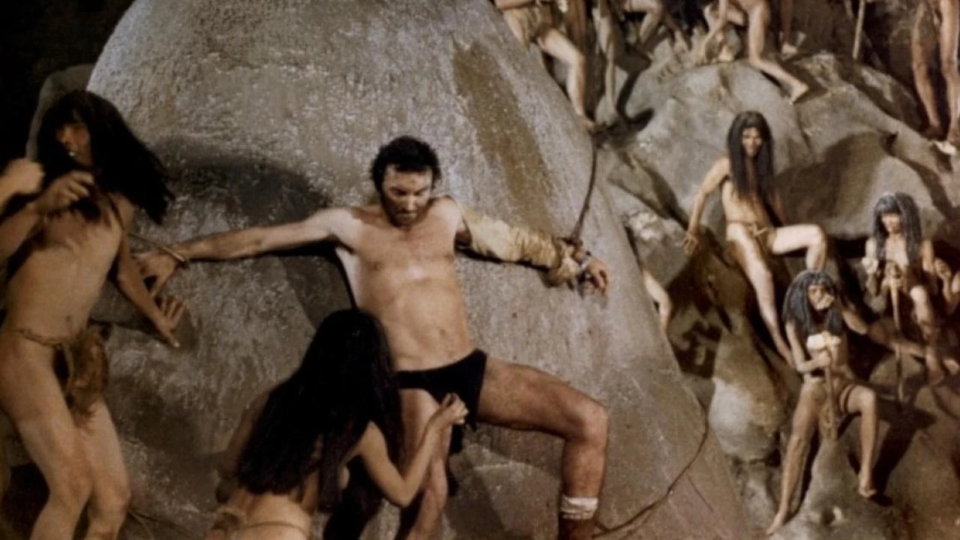
In the wake of Deodato’s passing, I sat down and rewatched a great deal of his filmography. On rewatch of Jungle Holocaust, I was struck by the sequence when Massimo Foschi is taken by the local cannibals. He is stripped and tied to a rock, where he is completely at the whims of the tribespeople as they threaten and assault him. It is a moment of great bravery from the actor, but also one that inflicts the same fear and terror on Foschi as these films usually inflict on actresses like Me Me Lai. It is in this moment that he is (symbolically) castrated and pushed into a different gender archetype than he was before his capture.
A lot of the idea of the horror film collapsing genders into mixed characters can be attributed to Carol J. Clover in her incredible book on gender criticism in horror, Men, Women, and Chain Saws. She writes at length about the ties between the spectator and the mixing of gender tropes and archetypes to the characters on the screen. She hints at the idea of bisexual identification, but doesn’t entirely commit, leaving it open for future criticism. This idea of a bisexual gaze and the two sexes present in one figure is evident in this sequence with Foschi (even though the film abandons it shortly after). The camera also commits the same violation as the tribespeople, lingering sensually over every inch of the actor’s body. A fascinating sequence in Deodato’s best film (in my opinion).
4. The Howling 2: My Sister Is A Werewolf (1985, dir. Philipe Mora)

An unfairly maligned film, Philipe Mora’s first film in The Howling series is a rock-n-roll camp-fest that swings widely away from the tone of the first film. The film follows a group of unwitting protagonists who decide to go to Transylvania to destroy Stirba, the werewolf queen. The acting is suspect at best, and the pacing is incredibly inconsistent, but there’s plenty of fun to wring out of the film (even if you just focus on the so-bad-it’s-good qualities). For the purposes of this column, however, we can push that all to the side and focus on Stirba herself.
Stirba is an all-powerful werewolf that focuses a lot of her time and energy on pure hedonism and self-satisfaction. It also becomes clear pretty early on that she is bisexual, with no qualms about attempting to bed either sex. In fact, a lot of her minions are also distinctly sexual, aligning the affliction of lycanthropy with open and honest sexuality. By turn, the protagonists are sterile and drab. Like Der Samurai, the film attaches sexuality to nature by connecting it to the nature of the wolf. While much less serious than that film, the shared theme is fascinating and makes this film one worth analyzing.
5. Rituals (1977, dir. Peter Carter)
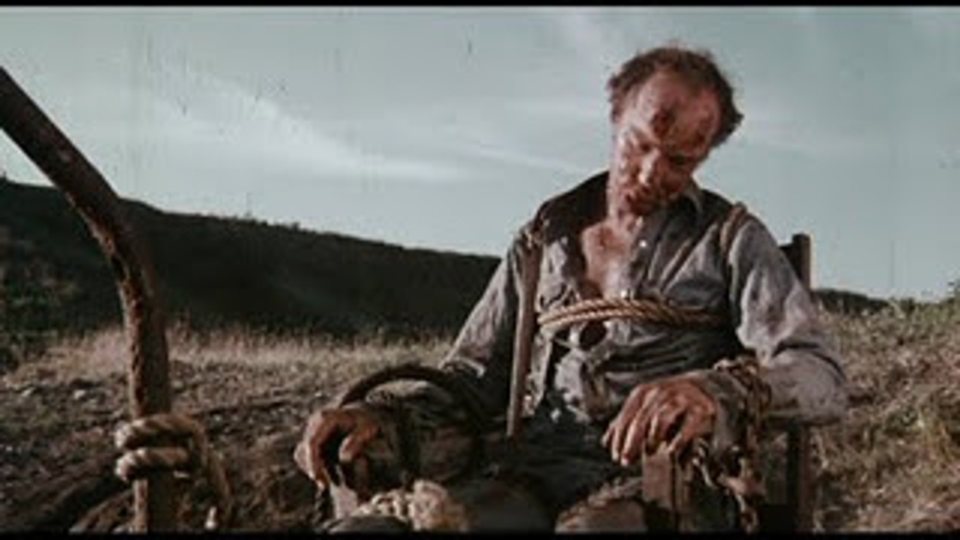
Rituals is a mean-spirited little film that wavers between Deliverance-style city versus rural animosity and creepy stalker-slasher. It follows a group of surgeons who go on a wilderness retreat for the weekend. This is a recurring motif in films on masculinity: the conquering of nature as a ritual of manliness and dominance. However, they are slowly killed off and grow more paranoid as they realize someone is stalking and attacking them in the deep wilderness. It is an incredibly well-made and deeply underrated film.
Our interest here lies in the character of Martin, who is a queer man in a film from the 70s. However, interestingly enough, it is never commented on or disparaged by his compatriots, and it also does not define him as a character. A lesser film would kill off a character like Martin earlier, showing him to at the bottom of the totem pole of masculinity. However, Martin is not the first victim and only falls victim to a hidden beartrap through no flaw or fault of his own. This sort of representation is fairly rare even today. I find it commendable that it was simply an aspect of his character instead of making him a walking stereotype. Rituals embraces homosexuality’s role within masculinity instead of discarding it.
A Final Note
As you can see, there is a great deal of variety that can be used to pull the thread of queer interpretations when it comes to the horror genre. Theory is a toolbox, and each theoretical lens is a different tool that can be used by the observer to pull more meaning out of any text (film in this case). Queer theory is an important part of the toolbox, but all of these films can be subjected to other forms of criticism (auteur, formalism, structuralism, etc) to add to our understanding of film as a medium and our own role as observers. After all, film is several mirrors: the lens, the projected screen, the eye, and the medium itself.
The purpose of the column has been to share these sorts of ideas and to maybe inspire some more writing on the subject. Thank you to everyone for reading, but the column is going on hiatus for the time being. Meanwhile, I’ll be working on a book and probably popping up here and there with different styles of theory from the ol’ toolbox. Stay safe out there, and I hope that your love for film never wavers.
Categorized:Editorials New Queer Extremity News

